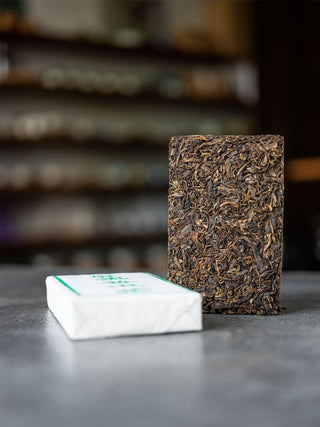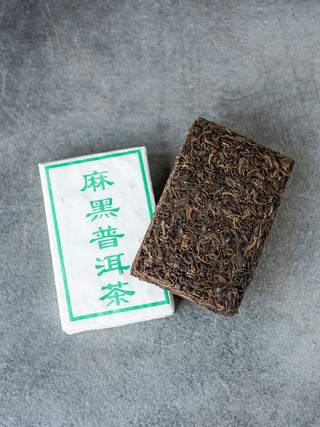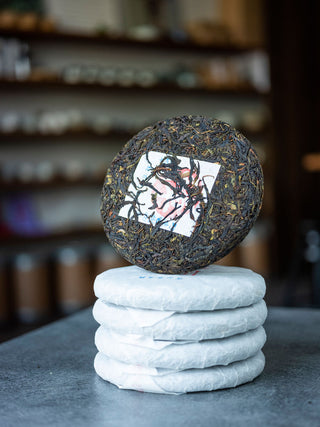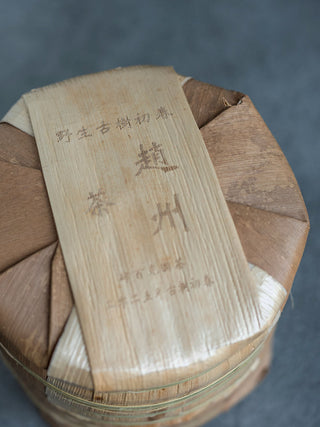Péter Galambos talks about Chinese teas and customs 4/3
Yunnan puer 普洱 tea has two main categories. The first one is sheng cha 生茶 which means raw, the second one is shu 熟 which is the fermented one. These are completely different teas. Shu puer is similar to a mulled wine with spices when the quality of the wine does not matter much. Sheng puer is different, because it is a living thing, and as a result, we can recognize the different qualities of the tea leaves. If the leaves are from an ancient tea tree, the qualities can be really special. Obviously, the price of the tea tells a lot about the quality as well. These kinds of ancient tree teas can cost 10 or even 100 times more. It means that 10 grams of tea can cost even half-million forints!
Besides the age of the tree, the location is the other factor that matters a lot. The Yunnan tea territories start North of Dali 大理, in a city nearby the Erhai 洱海 lake, and it goes down south along the Mekong River. This territory spans 800-1000 kilometers in length, dotted with smaller and bigger tea mountains. The tea leaves of each mountain have their own specific taste characteristic. Usually, sheng puer from this area is a mixture of leaves from different trees. Yet it is also possible to find 单株 tea. Danzhu indicates that the tea was produced from the leaves of a single tea tree. This kind of tea is very rare, or simply impossible to buy. Only after a special arrangement, one can get hold of this kind of tea. In order to acquire this tea, one has to have an agreement to determine a specific tree and arrange the price. If everything is settled, then tea can be produced from that particular tree. This kind of arrangement requires special knowledge. It requires high competence on the part of a sommelier and a lot of experience with local teas and geographical knowledge of the mountains. Tea tasting is a kind of profession that requires a lot of effort, focus, and determination. Usually, only one or two teas out of one hundred are deemed worthy to buy during the tea purchasing process. The main reason is that the tea sellers never show their best teas first.
One of these famous tea places is the Lao Banzhang region, situated in South China, near Burma. It is a small village counting around 100 villagers. In Lao Banzhang all the local families are tea farmers. It is a frequent practice to mix Lao Banzhang originated tea with some neighbor cities’ tea because this way they can sell more. Of course, if someone drinks a lot of tea in his life, he can differentiate Lao Banzhang from the rest, because it has a very unique taste. Instead of a delicate taste, it has wild and strong characteristics. Lao Banzhang’s biggest value lies not in the taste, but rather in the tea’s energy, the so-called chaqi 茶氣.
Teas made from ancient tea trees are always “essential”. If you drink it, it provides a strong body effect. Basically, it can open the channels. One can definitely feel when the effect comes. Instead of knocking, it is banging on the door. It is indeed a pretty noticeable effect. Lao Banzhang tea certainly has this effect. Due to being situated in a territory of high altitude (around 1600-1800 height), due to tropical vegetation in the area, around the area, a very matured and special tea is produced there. If you pick tea leaves from 10 kilometers further, it doesn’t have the same effect. Since the price of this tea is very high, it is almost impossible to buy 100% Lao Banzhang tea. It is always a little bit mixed. If you really want real Lao Banzhang, you rather raise the price higher, and not lower, so hopefully you won’t be cheated. You really need to be focused and alert when you are in teahunting.
When I went to the village of Lao Banzhang first time, it was a very poor place. If they wanted to go to the closest city, they needed to walk for two days through the deep forest. Nowadays it is completely different. You cannot see any of those traditional Chinese old houses, because all of them were changed into 2-3 floors high new buildings. The story of this development started with an investor from Shenzhen who is a great tea enthusiast. He used to explore good tea trees, and this is how he found Bulang mountain 布朗山 and its specific style of sheng which no one used to drink before. At the beginning of 2000’, he made a contract with the villagers. As an exclusive buyer, he would start to advertise Lao Banzhang tea. Two third of the villagers accepted the deal, so the investor started his brand called Chen Sheng Hao. His marketing was successful and the price went up very fast. Using the new popularity locals quickly sold their tea not caring about the agreement. Chen Sheng Hao is still a famous brand, but it does not only sells Lao Banzhang tea anymore. As the years go by, it is more and more difficult to find Lao Banzhang tea, but we try our best to bring some to Hungary.
This essay is based on a Galambos Péter & Varjasi Géza Buddha FM radio interview.
Transcribed & translated: Keller Mirella
Photos: Tálos Gábor
We published this interview in four different sections. You can find the links below.
-
Budapest – Beijing – Tibet
Péter Galambos talks about Chinese teas and tea culture 4/1 -
China and the various types of tea
Péter Galambos talks about Chinese teas and tea culture 4/2 -
What is the difference between sheng and shu puers?
Péter Galambos talks about Chinese teas and customs 4/4














